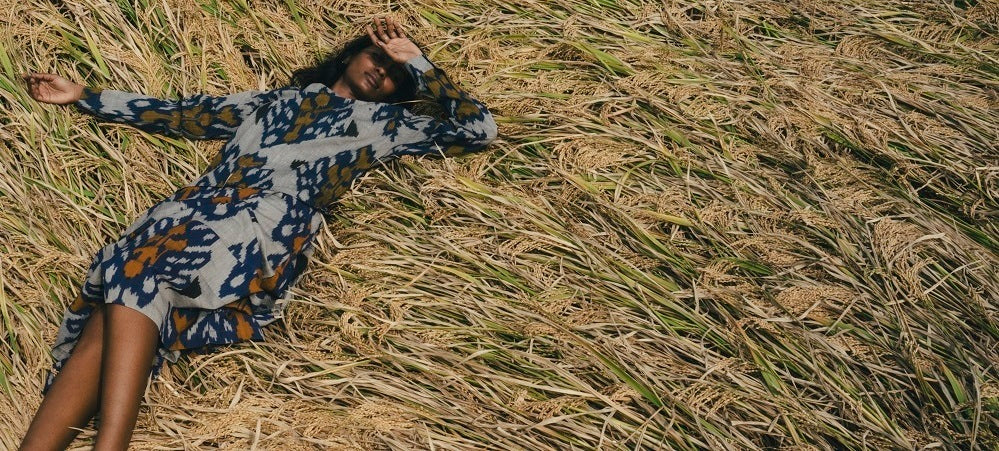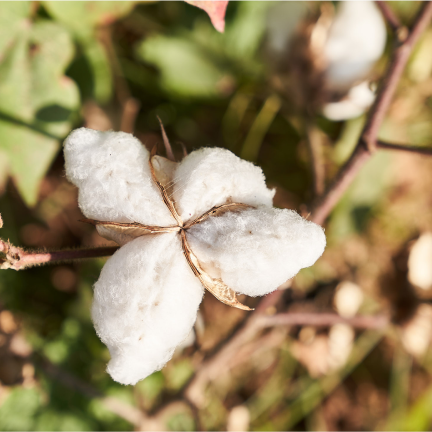Conventional clothing production relies on a convoluted system of sending raw materials, yarns, and fabrics all around the world before it becomes a finished garment. According to Agence de l'environnement et de la maîtrise de l'énergie in France, a pair of jeans can travel up to 65,000 km from farm to finished good.
Except in rare cases, cotton farmers sell their raw cotton to aggregators who combine cotton from all over the region, country, or in many cases, the world. Spinners combine this geographically diverse cotton into a homogenized yarn, which goes to whatever weavers need that quality. This story repeats itself until the finished garment is in a warehouse, often a world away from the farm it originated in. Every step of the process may have the correct paperwork, so the end product is certificated.
“Oshadi is the antithesis of this convoluted supply chain. It is a unique model for growing and making clothing because of its community-focused approach.”
Each member of the collective is connected. The cotton grows, becomes fabric, and transforms into garments all within a few kilometers in and around Erode, India.

Every piece that Oshadi produces starts at one of the over 200 small farms they work with. Although each farmer is responsible for their respective land, Oshadi provides them with all the tools they need to grow cotton regeneratively. At the start of the season, they provide all the native cotton seeds, cover and intercrop seeds, compost, natural fertilizer, and more to set the farm up for success. Throughout the season, they provide any additional resources and their farm managers visit the farms each week to help with any issues and make sure farmers are using best practices. At the end of the season, Oshadi pays the farmers a set price for their work and harvest, plus a bonus if they grow an exceptional amount of cotton.
Once Oshadi collects all the cotton from the farms, they work with local mills to gin, spin, and weave the cotton into fabric. A member of Oshadi’s team works directly with each of their partners to ensure they meet Oshadi’s ethical, environmental, and quality standards.

The finished garment is the result of actual relationships, rather than a convoluted paper trail. Oshadi offers a refreshing alternative to conventionally produced clothing, including those certified. Certifications can provide brands and consumers with assurance of better practices. However,
the last few years have shown that the industry’s leading certifications’ scale and lack of due diligence can lead to greenwashing.
For example,Earthsite, an investigative non-profit, found that Better Cotton Initiative, the number one certifier of cotton globally, certifies cotton from farms causing deforestation in Brazil’s Cerrado wilderness.
“Oshadi has created a radical experiment in hyper-localized production, transparency, and a community-based approach.”
So far, the results are positive: more farmers, artisans, and producers have joined the collective, the farms have improved yield and soil health, and the supply chain partners have received consistent work and a living wage. Most importantly, Oshadi can cite actual examples of their positive impact on their local community and environment for their customers, rather than a piece of paper with a certification stamped on it.
Written by Mairin Wilson












